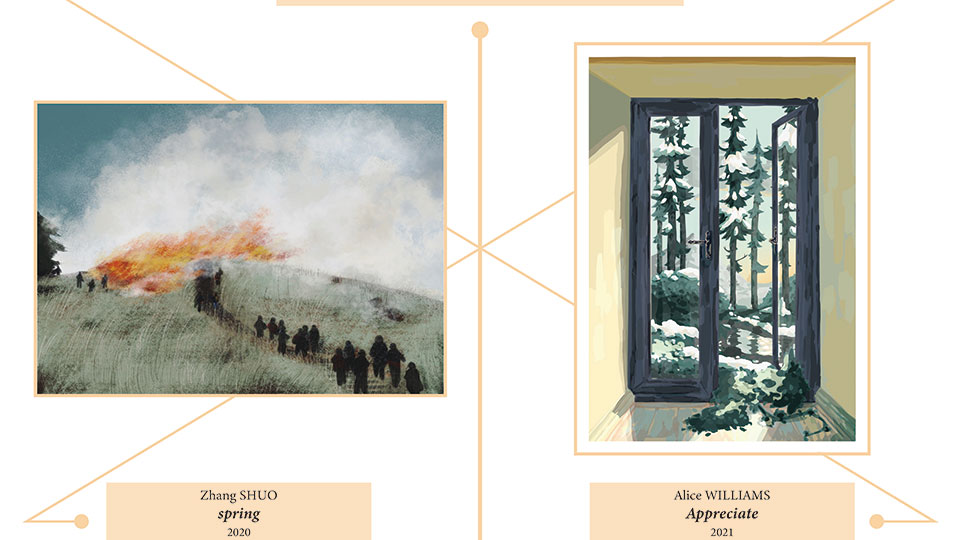Panel two - Selected by Nana OTA

Curator Comment by Nana OTA about “Spring” by Zhang SHUO
This work depicts a scene of Noyaki (open burning) that has been performed in Japan for a long time. It is a custom to burn the dead grass in the field in early spring so that new grass can grow well.
The artist who made this work saw an article about Noyaki in a Japanese newspaper, and remembered the poem "Cǎo (Grass)." This is a Chinese poem written by a famous poet of the Tang Dynasty, Bai Letian.
Even if the grass burns once, it will sprout again in spring.
Like this overgrown grass, my sadness of being separated from my friends is endless.
The thoughts contained in this poem overlap with the thoughts we have at the present time. In 2020, the impact of COVID-19 changed our lives significantly. It seems as if it has become harder to meet friends and connections between people have diminished. But even if we are separated, our connections with our friends will not disappear. Even if our circumstances are burned by a fire named Corona, we will not burn out, but rather we will be able to live more beautifully once burnt. This work gently sends such a message to us now.
Curator Comment by Nana OTA about “Appreciate” by Alice WILLIAMS
Due to the impact of COVID-19, lockdowns happened all over the world. It was also difficult to go out in the UK. "At that time, I often looked at the scenery outside the window from inside the window," says the artist of this artwork.
In this artwork, a forest and a door are depicted.
The snow-covered coniferous forest is one of the most beautiful landscapes in the English countryside, and can be seen as a symbol of the "outside world" of the UK. The door made of transparent glass could be said to be both a door and a window.
A door is a boundary that separates this side from the other side; inside and outside.
But because it's also a window, and half open, it makes it feel like there's almost no gap between the inside and the outside. As a result, its power as a boundary is weakened. Rather, the existence of the door as an entrance or exit; as a connection between the two worlds, emerges strongly.
The message that we are inside but not trapped, connected to a beautiful world of bright sunlight emerges strongly.